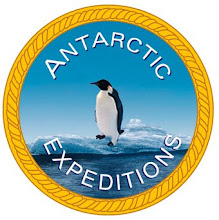Below 60°S latitude lies the immense white continent of Antarctica. In the geography and history of the world, the Antarctic is like no other land: trees and flowers are lacking; there is no autochthonous (indigenous) population, in short, life is practically non-existent. Antarctica is the coldest, highest and most inhospitable continent on Earth. It is the last region of the world to be incorporated in geographical studies, partially because it offers the most resistance to man’s efforts to investigate its mysteries. It has yet to be permanently inhabited.
Antarctica covers almost one-tenth of the earth’s surface, supports the greatest mass of ice in the world, and is surrounded by a deep and circumpolar ocean. Its isolation from the other continents is striking and unique due to seas of abysmal depths covering distances of 1,000 kilometers (621 miles) between itself and America, and up to 3.600 km (2,236 mi.) between itself and Africa. This isolation, the stormy nature of the intervening seas, and above all Antarctica’s extreme, severe climate, explains why man has been unable to reach and explore this remote region until relatively modern times. Indeed, major exploration only began with the International Geophysical Year (IGY). 1957-1958.
Although Antarctica was discovered around the second decade of the 19th century, no one spent the winter on the continent until 1899. In this interval, many sailors saw the Antarctic coasts from their ships and some landed on the Antarctic Peninsula.
The Greeks had suspected the existence of land far to the South to balance the northern lands. They called it “antarktikos” (opposite the Arctic). The Maories, natives of New Zealand, formed legends around a white land in the far South. Early studies on tidal variations in the Indian Ocean provided an intuitive acceptance of such a landmass, and Ptolemy in the second century A.D. later strengthened this belief with his thesis on “Terra Australis Incognita.” The fact that these lands comprise a continent - Antarctica - was not finally determined until the 20th century…



No comments:
Post a Comment